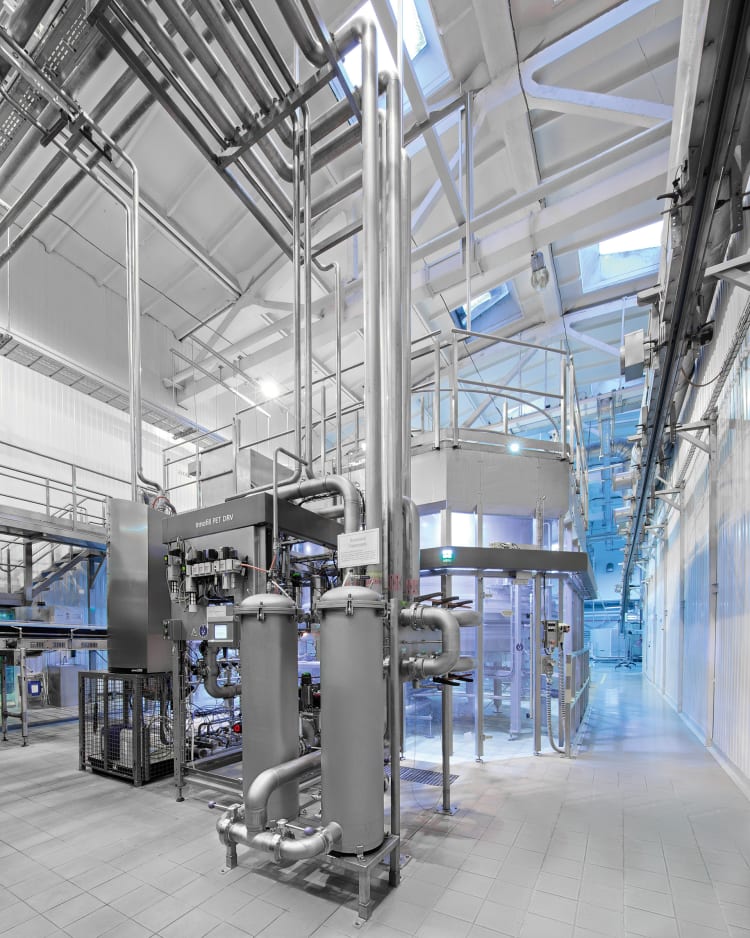
IDS Borjomi is pursuing its noble objective with much success: since 2002 the domestic market for bottled water has more than doubled and with annual growth rates of around 7% there’s no end to the boom in sight. IDS Borjomi has made a considerable contribution here.
In 2009 the company procured the Svyatoj Istochnik or Saint Spring brand. This bottled water brand has been available in Russia since 1994 and was the first on the market. Originally from Kostroma, the brand has also been bottled in Lipetsk since 2010 and since 2017 in Novosibirsk, over 3,000 kilometers from Moscow. Production at the latter site has ensured that Svyatoj is also available in Siberia and the Urals, thus catering for the entire Russian market. This has proved a successful concept: with a financial share of almost 11% Svyatoj Istochnik is now market leader in Russia – by a large margin.
Pioneering a healthy lifestyle
Part of the strategy is to inform consumers of the health benefits of bottled water. “We tell our target groups how important it is to maintain their intake of fluids,” explains Alexander Zhadanov, CEO von IDS Borjomi Russia. “We want our customers to get used to drinking at least three 0.5-liter bottles of water a day. This means that they consume the recommended amount of 1.5 liters needed to stay healthy. We even provide recommendations on when it’s best to drink water: for example in the mornings, right after waking up to activate your organism, or half an hour before meals to stay in shape. Or throughout the day in order to be able to tackle important tasks with the necessary concentration.” It helps that the Russians have long followed the trend of adopting a healthier way of life, increasingly rejecting carbonated, sugary beverages, juices and even coffee and turning instead to water.
The brand is also reaching out to consumers through a number of major advertising campaigns. Commercials featuring prominent figures as reformed water drinkers set an example in front of the camera. The brand also passes on the message to children of all ages (and their parents) that it’s fun to drink water – and it’s good for you. To this end, as a contract filler for Disney Svyatoj Istochnik fills its water into special bottles that are extremely popular with kids.

The KHS Innofill PET DRV filler is part of the InnoPET BloFill stretch blow molder/filler block.
Care for the environment
Accepting social and ecological responsibility is also an aspect of the company’s philosophy. “We’re always looking for ways of striking a balance between the use of PET and the protection of the environment as part of our sustainability strategy,” states Zhadanov. “We use eco-friendly packaging, promote the collection of PET bottles and packaging for recycling and use recycled PET in our containers. We’re also trying to continuously reduce the weight of our bottles. At the same time we’re lowering the impact on the environment by cutting energy and media consumption in production.”
In order to so do IDS Borjomi has invested a considerable sum in the consistent modernization of its bottling plants. Two new filling lines from Dortmund systems provider KHS were installed and commissioned at the production sites in Novosibirsk and Lipetsk at the beginning of 2018 and at the end of 2019 the production shop in Kostroma was brought up to date. Here, too, this has resulted in the output being doubled in the first quarter of 2020. The lines, which have a capacity of up to 44,000 0.5-liter bottles per hour, are identical in their design and feature a blending system for near-water products with a stretch blow molder, labeler, filler, shrink packer and palletizer. At all three bottling plants a uniform, high standard of quality, production and logistics has thus been created which also allows for future growth.
Light and stable
KHS has also been able to score on the bottle weight. With the help of KHS’ Bottles & Shapes experts the container design has been further developed so that the base is lighter – without making any concessions regarding stability. This means that the weight of the 0.5-liter bottle has been decreased from 20.5 to 18.8 grams, thus also reducing the amount of materials used and cutting CO2 emissions.
One can imagine that an investment project like this wasn’t without its challenges. “There were sometimes a few language or cultural barriers to overcome yet this was absolutely no problem thanks to our highly professional and friendly cooperation,” emphasizes Evgeny Vturin, operational director for IDS Borjomi Russia. In some respects the climatic conditions actually proved more demanding. “It’s not that easy to ship a line to Novosibirsk and install it there in the winter. It was so bitterly cold that even the heat exchanger froze during transport. In the end everything turned out well, however, and the line went into operation on time.”



